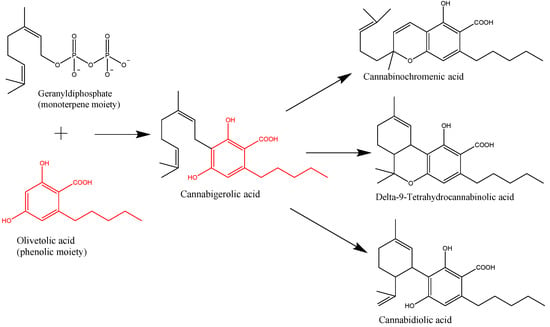 “Cannabinoids are compounds that are structurally and/or functionally related to the primary psychoactive constituent of Cannabis sativa, [INCREMENT]-tetrahydrocannabinol (THC). Cannabinoids can be divided into three broad categories: endogenous cannabinoids, plant-derived cannabinoids, and synthetic cannabinoids (SCs).
“Cannabinoids are compounds that are structurally and/or functionally related to the primary psychoactive constituent of Cannabis sativa, [INCREMENT]-tetrahydrocannabinol (THC). Cannabinoids can be divided into three broad categories: endogenous cannabinoids, plant-derived cannabinoids, and synthetic cannabinoids (SCs).
Recently, there has been an unprecedented surge of interest into the pharmacological and medicinal properties of cannabinoids for the treatment of epilepsies. This surge has been stimulated by an ongoing shift in societal opinions about cannabinoid-based medicines and evidence that cannabidiol, a nonintoxicating plant cannabinoid, has demonstrable anticonvulsant activity in children with treatment-refractory epilepsy.
The major receptors of the endogenous cannabinoid system (ECS)-the type 1 and 2 cannabinoid receptors (CB1R, CB2R)-have critical roles in the modulation of neurotransmitter release and inflammation, respectively; so, it is not surprising therefore that the ECS is being considered as a target for the treatment of epilepsy.
SCs were developed as potential new drug candidates and tool compounds for studying the ECS. Beyond the plant cannabinoids, an extensive research effort is underway to determine whether SCs that directly target CB1R, CB2R, or the enzymes that breakdown endogenous cannabinoids have anticonvulsant effects in preclinical rodent models of epilepsy and seizure.
This research demonstrates that many SCs do reduce seizure severity in rodent models and may have both positive and negative pharmacodynamic and pharmacokinetic interactions with clinically used antiepilepsy drugs. Here, we provide a comprehensive review of the preclinical evidence for and against SC modulation of seizure and discuss the important questions that need to be addressed in future studies.”
https://www.ncbi.nlm.nih.gov/pubmed/31895186
https://insights.ovid.com/crossref?an=00004691-202001000-00004

 “Neuropathic pain associated with nucleoside reverse transcriptase inhibitors (NRTIs), therapeutic agents for human immunodeficiency virus (HIV), responds poorly to available drugs.
“Neuropathic pain associated with nucleoside reverse transcriptase inhibitors (NRTIs), therapeutic agents for human immunodeficiency virus (HIV), responds poorly to available drugs. “(-)-Trans-Δ9-tetrahydrocannabinol (Δ9-THC) is the main compound responsible for the intoxicant activity of Cannabis sativa L. The length of the side alkyl chain influences the biological activity of this cannabinoid. In particular, synthetic analogues of Δ9-THC with a longer side chain have shown cannabimimetic properties far higher than Δ9-THC itself. In the attempt to define the phytocannabinoids profile that characterizes a medicinal cannabis variety, a new phytocannabinoid with the same structure of Δ9-THC but with a seven-term alkyl side chain was identified. The natural compound was isolated and fully characterized and its stereochemical configuration was assigned by match with the same compound obtained by a stereoselective synthesis. This new phytocannabinoid has been called (-)-trans-Δ9-tetrahydrocannabiphorol (Δ9-THCP). Along with Δ9-THCP, the corresponding
“(-)-Trans-Δ9-tetrahydrocannabinol (Δ9-THC) is the main compound responsible for the intoxicant activity of Cannabis sativa L. The length of the side alkyl chain influences the biological activity of this cannabinoid. In particular, synthetic analogues of Δ9-THC with a longer side chain have shown cannabimimetic properties far higher than Δ9-THC itself. In the attempt to define the phytocannabinoids profile that characterizes a medicinal cannabis variety, a new phytocannabinoid with the same structure of Δ9-THC but with a seven-term alkyl side chain was identified. The natural compound was isolated and fully characterized and its stereochemical configuration was assigned by match with the same compound obtained by a stereoselective synthesis. This new phytocannabinoid has been called (-)-trans-Δ9-tetrahydrocannabiphorol (Δ9-THCP). Along with Δ9-THCP, the corresponding 
 “Dystonia is a movement disorder characterized by sustained or intermittent muscle contractions causing abnormal movements and postures. Besides motor manifestations, patients with dystonia also display non-motor signs and symptoms including psychiatric and sensory disturbances.
“Dystonia is a movement disorder characterized by sustained or intermittent muscle contractions causing abnormal movements and postures. Besides motor manifestations, patients with dystonia also display non-motor signs and symptoms including psychiatric and sensory disturbances. “This review focuses on the possible roles of phytocannabinoids, synthetic cannabinoids, endocannabinoids, and “transient receptor potential cation channel, subfamily V, member 1” (TRPV1) channel blockers in epilepsy treatment.
“This review focuses on the possible roles of phytocannabinoids, synthetic cannabinoids, endocannabinoids, and “transient receptor potential cation channel, subfamily V, member 1” (TRPV1) channel blockers in epilepsy treatment. “The most bioactive ingredient of
“The most bioactive ingredient of  “Elucidation of
“Elucidation of  “As a library of cannabinoid (CB) derivatives with (-)-trans–
“As a library of cannabinoid (CB) derivatives with (-)-trans– “Cannabis sativa L. is a plant long used for its textile fibers, seed oil, and oleoresin with medicinal and psychoactive properties. It is the main source of phytocannabinoids, with over 100 compounds detected so far. In recent years, a lot of attention has been given to the main phytochemicals present in Cannabis sativa L., namely,
“Cannabis sativa L. is a plant long used for its textile fibers, seed oil, and oleoresin with medicinal and psychoactive properties. It is the main source of phytocannabinoids, with over 100 compounds detected so far. In recent years, a lot of attention has been given to the main phytochemicals present in Cannabis sativa L., namely, 